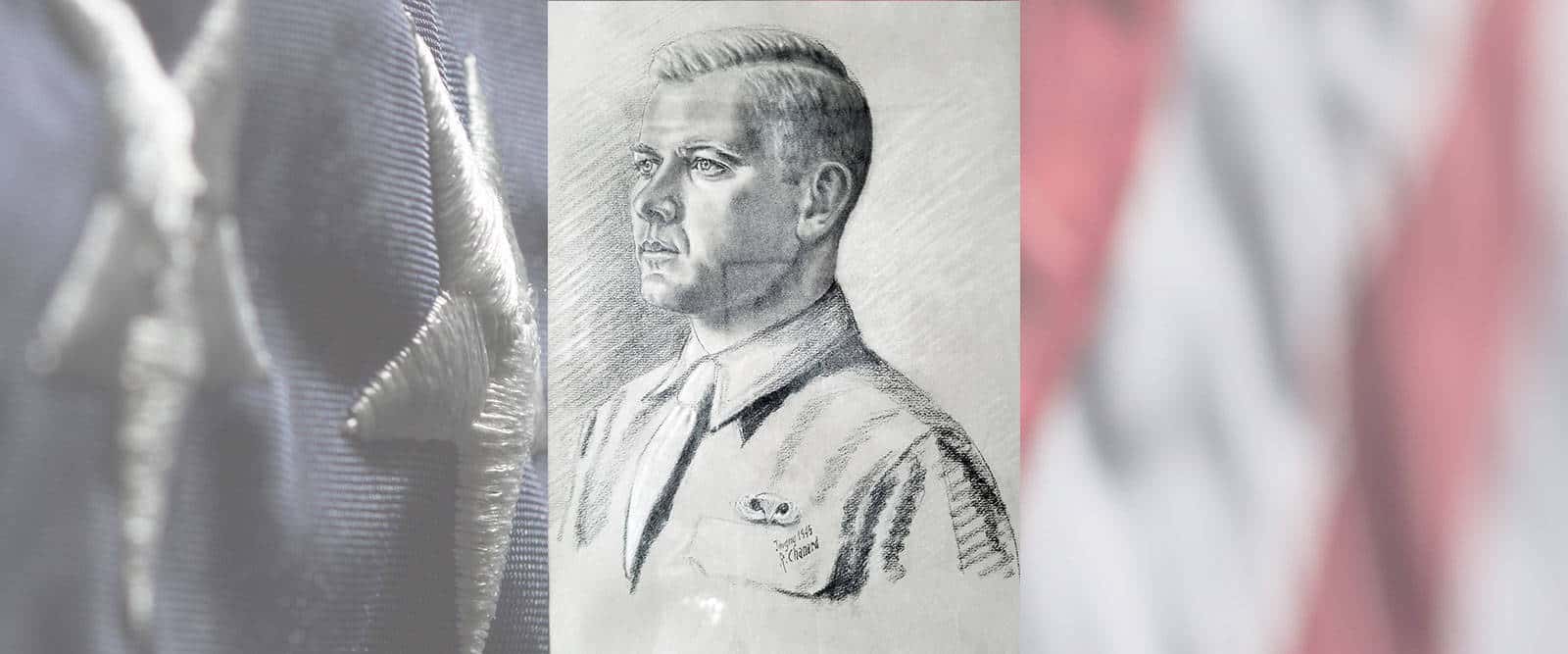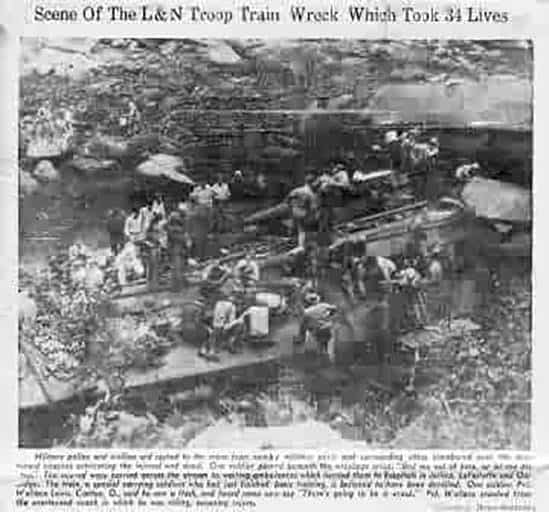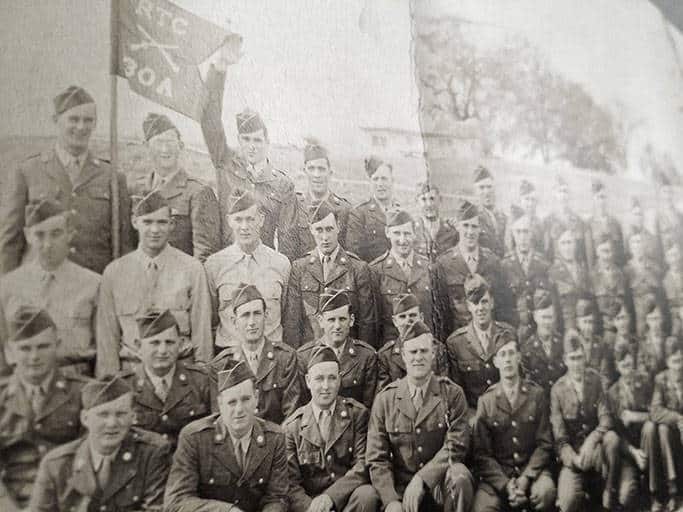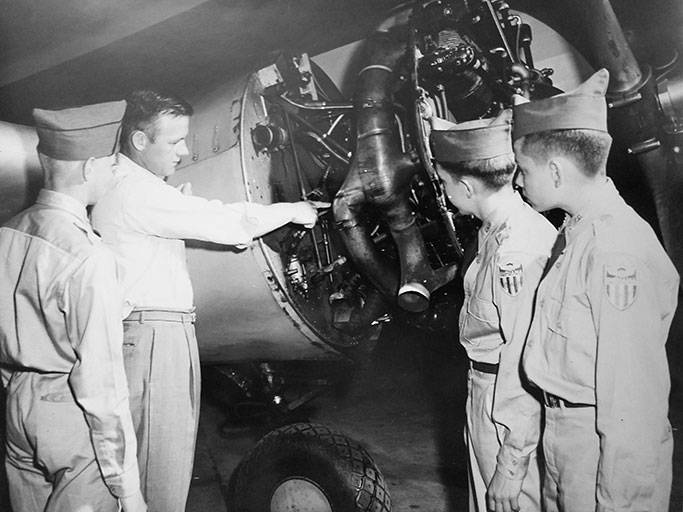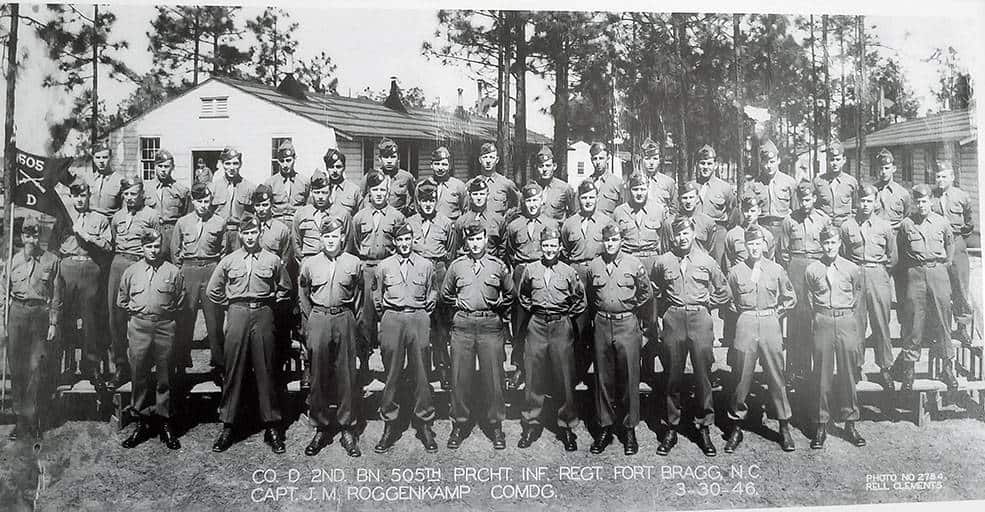U.S. Army World War II Valparaiso, IN Flight date: 09/13/17
By Len Sherwinski, Honor Flight Chicago Veteran Interviews Volunteer
Claude Choate served with the United States Army from June of 1944 to April of 1946. His military service began on an ominous note when the troop train taking him to basic training was derailed. Forty-eight soldiers were killed and 180 others injured. Claude recalls that he was just 18 and had graduated from high school 17 days earlier!
Originally drafted in November of 1943, the Army deferred his induction until after he graduated from Hobart High School in June of 1944. He reported to the induction center at Ft. Benjamin Harrison in Indianapolis, Indiana and was on his way to training camp in Spartanburg, SC on the troop transfer when the train accident occurred. It was 9:20 in the evening and as the L&N Railroad train #47 reached the Jellico Gorge on the border of Tennessee and Kentucky, the soldiers were suddenly sent flying. The engine and four railroad cars tipped over on their sides as they plunged 90 feet into the Clear Fork River. Claude was slightly injured. He recalls, because he was not legally an adult, the Army assigned a lawyer to represent him in the settlement with the railroad. Making just fifty cents per hour at the soda shop before entering the Army, Claude thought he had hit the jackpot with the $200 he received from the railroad.
None of this delayed the beginning of his seventeen weeks of basic training at Camp Croft in Spartanburg, SC. It did make him more noticeable in the group photo as he and two soldiers had lost their uniforms in the wreck and only had khaki shirts to wear. Camp Croft was built for training “loss replacement” infantrymen. This camp was newly built and sometimes referred to as the “Country Club of the South.” This nickname had more to do with the newness and location of the facility than the difficulty of the training. Each soldier training here was being prepared to go into combat as a rifleman and for replacement of soldiers who were battle casualties, sick, or for units needing to increase their number of soldiers. At the time, Claude was very determined to become a paratrooper. A wrestler, football player and runner in high school, he was ready to use his energy on the battlefield. He got his wish and went on to five weeks of parachute training at Ft. Benning, GA.
After completing training, he was sent to New York in preparation to be sent overseas. As he walked toward his troop ship, he thought he would be walking up a gangplank to board a Navy ship. But he was surprised when he realized that his troop ship was actually the Queen Mary en route to Glasgow, Scotland. As he entered the ship he noticed the bunks were stacked eight high. He found a bunk in Section D and settled in, only to find out that he was located over the engines. The five and one-half days it took to cross the ocean were not luxurious or quiet. As they entered Glasgow the nets used to keep submarines out of the harbor had to be raised so the ship could dock.
Now assigned to the 517th Parachute Infantry Regiment known as the Bastard Regiment, he made his way to Le Harve France as a replacement for some of the men who had already seen combat. In Le Harve, he was assigned to what they called “Cigarette Camps.” These camps had names like “Lucky Strike, Old Gold and Pall Mall” referring to popular cigarette brands of the time. The Army used these names for two reasons. They thought the enemy would be confused by these names and they wanted to give some psychological comfort to the men heading off to battle.
Although he became a paratrooper because of the additional pay he received, his skills as an expert rifleman were more important in combat. He recalls “once you made the jump, the rest was all about being an infantryman.” Claude participated in twenty-two jumps, and received two battle stars for his involvement in the liberation of France as part of the Central Europe and Rhineland Campaigns.
On August 14, 1945, Claude and his fellow paratroopers were assigned to the 18th Airborne Corps. This team was being sent to Ft. Bragg, NC to prepare for the invasion of Japan. They were sailing back to the states aboard the Oneida Victory Ship and three days out they were told the war in Japan had ended. Rumors in the military were common at the time so few of them believed it until their 10 1/2 day voyage reached New York. From there they went to Ft. Bragg, NC but were soon back in New York when the entire 82nd Airborne Division was ordered to participate in the Victory Day parade on January 12, 1946. Claude remembers “the unimaginable number of soldiers” that were assembled there and the sense of joy and pride that everyone shared. Over 13,000 soldiers participated and the parade was over four miles long. The 82nd Airborne was led by Major General James Gavin who was the youngest major general to command an American division in World War II.
Claude would continue to serve at Ft. Bragg where he was assigned to the 505th Parachute Infantry Regiment as a Staff Sergeant, until his honorable discharge on April 21, 1946 at Camp Atterbury.
After his service Claude attended Ball State University for a short time, but on a summer break, he was offered a job as a lineman with NIPSCO. He couldn’t turn down the 96 cents an hour they offered him and he would work for them for thirty-seven years as a foreman, general foreman and superintendent of construction. At the age of 32, he met and married Kathleen; they were married for 58 years before she passed away two years ago. Claude has one daughter, one granddaughter and four great-grandchildren. He is a licensed pilot and very proud of the years he spent as an instructor with the Civil Air Patrol.
Thank you, Claude, for sharing your memories. They inspire us and we want to thank you! Enjoy your well-deserved Honor Flight.



